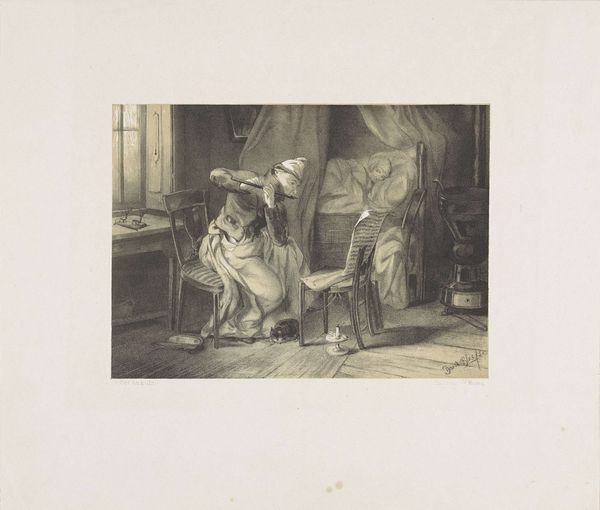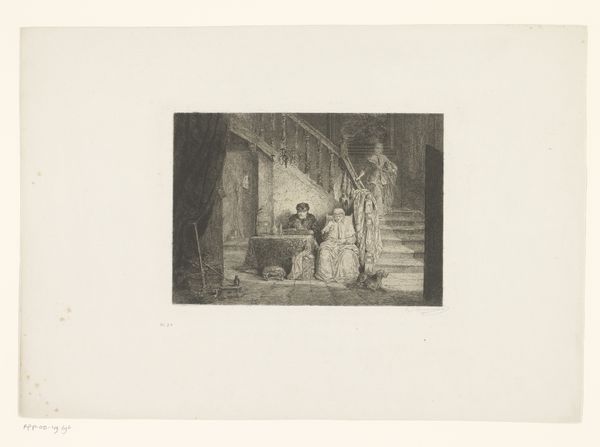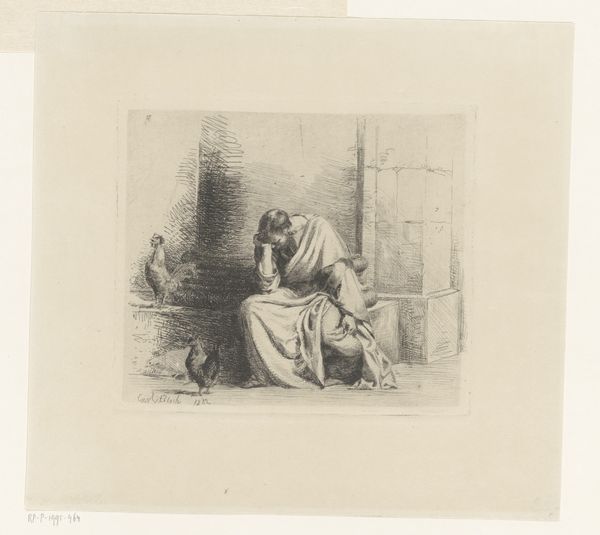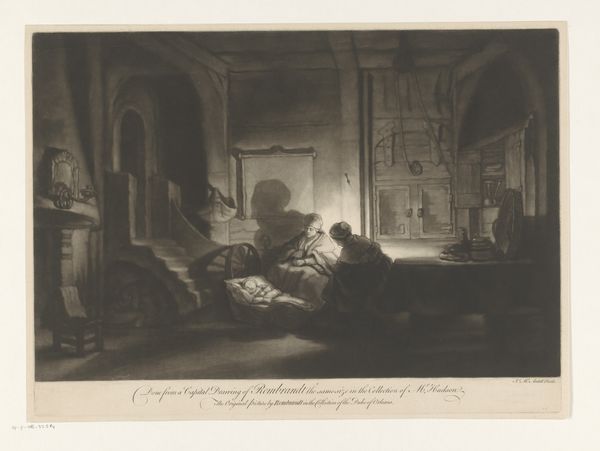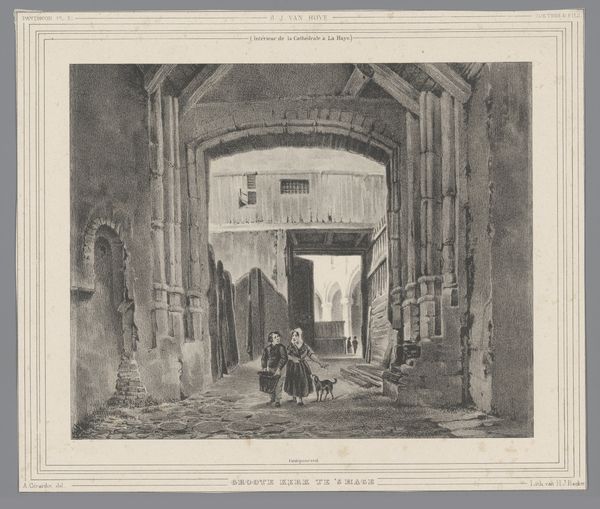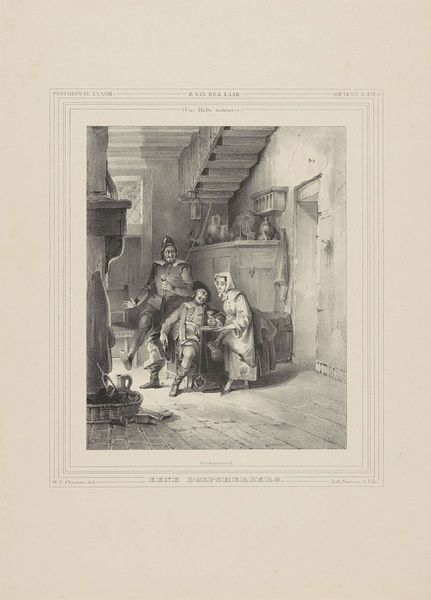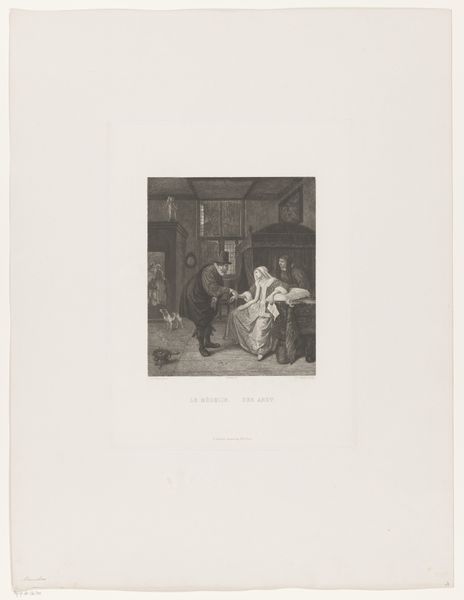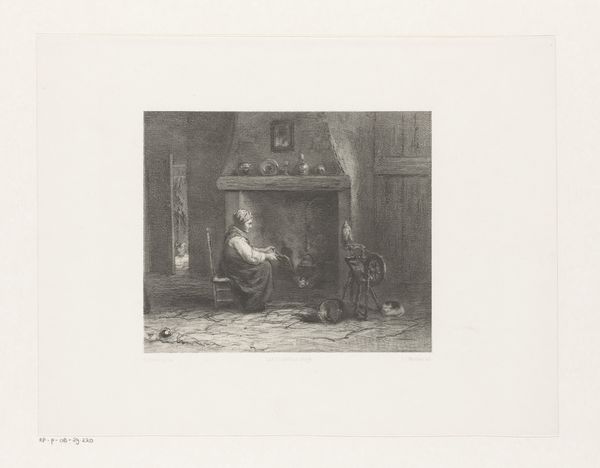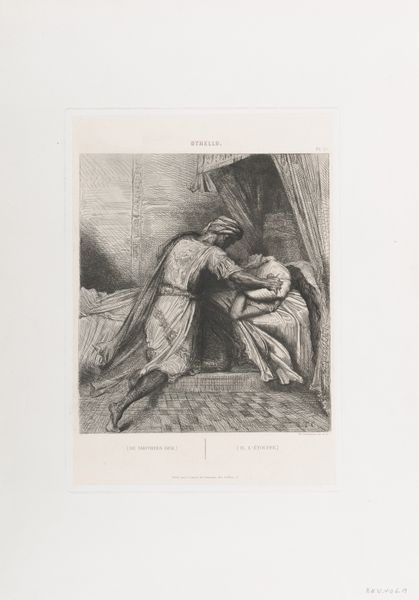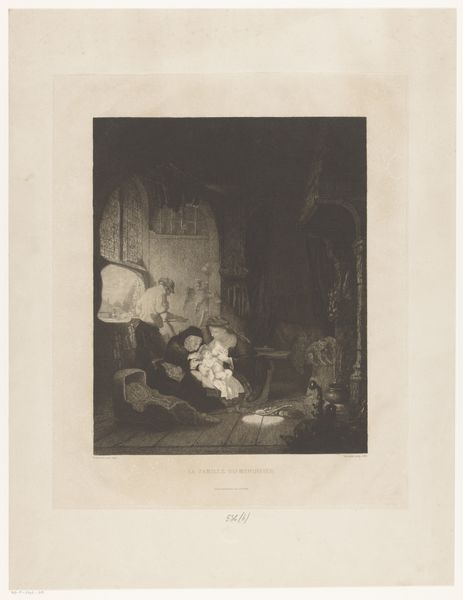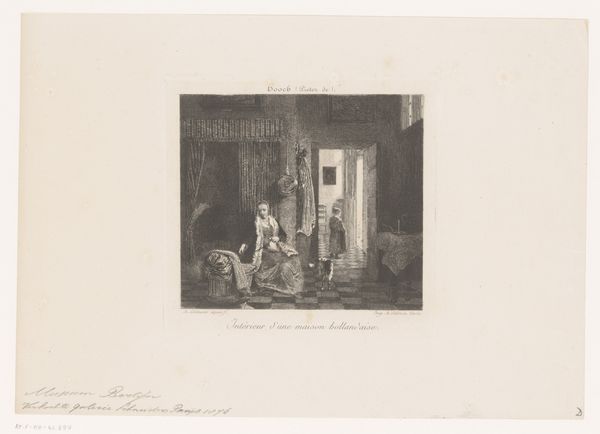
Dimensions: height 270 mm, width 351 mm, height 357 mm, width 441 mm
Copyright: Rijks Museum: Open Domain
Curator: This drawing is titled "Hubert Duifhuis lezend in een kerk", or "Hubert Duifhuis Reading in a Church", rendered in graphite by Johannes Bosboom sometime between 1847 and 1887. It currently resides here in the Rijksmuseum. Editor: My initial reaction is one of quiet solemnity. The muted tones, the lone figure, and the vast, echoing space all contribute to a contemplative atmosphere. It almost feels like witnessing a private moment of devotion. Curator: Yes, the use of graphite really emphasizes the play of light and shadow within the church's architecture, something Bosboom explored repeatedly throughout his career. Churches represent far more than sacred spaces—the vaulting structures mimic interiority, while the light pouring through the high windows represents transcendent knowledge, perhaps. Editor: I see the architecture less as a container of holiness and more as a testament to power structures, right? This intimate moment feels constructed within a building that historically reinforced social hierarchies. I think about access, about who *isn't* pictured here, and about who gets to interpret the text on that lectern. Curator: Interesting point, but that is a fairly modern view! Churches for centuries provided not just spiritual sustenance but were also central to community life, points of gathering, shared experience and collective identity. Duifhuis here embodies a link between those traditional roles and a commitment to religious text. He embodies faith, study, and perhaps even reform within that tradition. Editor: I acknowledge the historical context, but isn't it our responsibility to consider how spaces like this perpetuate existing power imbalances? What does this quiet study offer to those excluded, actively or tacitly, by religious institutions? Whose history is really preserved in these grand structures? Curator: We both appreciate that historical narratives aren't static, but evolve across generations. While your emphasis highlights societal dynamics reflected by the depicted architecture, mine seeks out enduring motifs, the visual vocabulary that binds cultures through time. Editor: A dialectical tension between legacy and impact: art reminds us to simultaneously respect what came before and critically analyze the systems of the past to inform how to approach justice now.
Comments
No comments
Be the first to comment and join the conversation on the ultimate creative platform.
